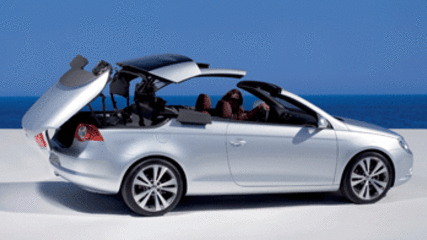Volvo C70 2007 Review
By James Stanford · 02 Jun 2007
The Swedish company more or less just cut the roof off the C70 coupe and the top-down cruiser wobbled and shook when confronted by small ripples in any road.A chassis engineer who worked on the car admitted to CARSguide that the team did the best with what they were given, but the body simply wasn't anywhere near stiff enough.So, looking back, the best things about the first C70 convertible were the way it looked, at least for a Volvo, and the first Dolby surround-sound system to be fitted in a car.Now we have the all-new C70 convertible, which replaces the coupe as well thanks to its folding metal hardtop.It is one of the new generation of coupe-convertible cars, which come in most classes from the forthcoming Nissan Micra to the Holden Astra and Volkswagen Eos to the BMW 3-Series convertible.Volvo developed the car in-house, building it off the same base as the S40 sedan-V50 wagon twins and the new C30 compact coupe.And it spent a lot more time, effort and money to make sure the new C70's body is twice as stiff as the last. As a consequence, the C70 carries about 100kg of extra bracing to reinforce the body so it feels tight even when the roof is folded into the boot.The two models in the new C70 range are the base LE, which costs $69,950, and the sportier turbo T5 model, $79,950.Neither car is cheap, but they seem a bargain compared with the original model, which cost $95,000 to $105,000 when it arrived in 1999. Volvo has also put a non-turbo motor in the LE entry-level car to help the priceline.The LE runs a 2.4-litre in-line five-cylinder petrol engine, mounted transversely (from right to left across the engine bay), which generates 125kW and 230Nm of torque.When you take into account the C70's kerb weight of 1646kg and compare that with the power and torque figures, it doesn't take a Formula One engineer to work out that the LE is more of a cruiser than a sportscar.The C70 T5 is a different animal. It runs a 2.5-litre in-line five with a big turbocharger. This engine, which is also used in Ford's red-hot Focus XR5 and Volvo's own C30 T5 hero car, pumps out 162kW and 320Nm.The LE and T5 come with a standard five-speed automatic transmission that drives the front wheels. The C70 LE comes standard with anti-skid brakes, traction control, front and side airbags for the driver and front passenger as well as door-mounted curtain airbags. Yet, strangely, the LE misses out on electronic stability control, which you would expect to be fitted to all Volvos.Volvo has done its best to prevent a rollover by widening the car's track, the distance between the wheels across the axle, by 29mm to 39mm to make for a more stable vehicle.But if the C70 does happen to tip, steel roll bars that sit behind the rear seats shoot up to protect the occupants. They will do their job regardless of whether the top is up or down, and are fitted with spikes in case they need to punch through the rear glass window.Standard features for the LE include leather seats, climate control airconditioning, trip computer, cruise control, premium sound system and 17-inch alloy wheels.The T5 adds a 12-speaker Dolby surround-sound system, bi-xenon headlights, rain sensing wipers and 18-inch alloy wheels.On the RoadThe new C70 still has a great sound system but, unlike the model it replaces, it is also a pretty good car.Drop the roof and you will immediately notice the improvements in body stiffness. With its new buff body, the C70 rides and corners better, too, with almost none of the wobbling of the previous model.It is still not perfect and you can still feel some slight shakes with the roof down on bumpy roads, but it is no worse than most convertibles. Unfortunately, when the roof is up the serenity of the cabin is disturbed by constant creaking noises when travelling along uneven road or easing into driveways and car parks. It sounds as if the noise comes from the roof joints and can spoil a good drive.Volvo has set the C70 LE's suspension for cruising rather than agility. So it is on the softer side, but can be agitated by ruts and other sharper road imperfections.The C70 does seem to follow the road, in that its steering is affected by road conditions, and you have to make an extra effort to make sure the car is heading in the right direction.Listening to the sound system is a real treat, even in the LE model that misses out on the Dolby system. With a subwoofer mounted on the dashboard, this sound system invites you to put down the roof and turn up the volume up.




